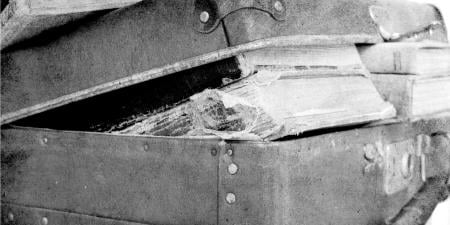Case
Dr. Cushman has spent 10 years as an internist in a county hospital in urban Los Angeles. When he began his residency, he realized how many of the city’s underserved, poor minority and immigrant populations relied on the hospital for care. Moved by the dire medical needs of his patients and their communities, he stayed on as a chief resident and later became an attending physician.
He has always seen his work as meaningful and rewarding, but recently he has begun to feel strained by the challenges of indigent care. Many of his patients suffer from diabetes, obesity, substance abuse, or HIV—chronic conditions that he can manage, but rarely cure. Many are homeless, subject to violence, and lack the means to maintain their health outside of the hospital, trapping them in a cycle of deterioration and readmission. He sometimes feels that, despite the excellent care he and his team provide, there is little he can do to oppose the pervasive effects of socioeconomic circumstances on his patients’ health. His wife suggested that he take a writing class to help him cope with the stress, and he has been writing reflective pieces about his experiences at the hospital and with particular patients.
Inspired by the memoirs of other physicians and with the encouragement of his writing teacher, Dr. Cushman finally collects his essays and sends them to a publisher. Not only has the experience of writing down and sharing his feelings has been cathartic, but he also feels that a memoir for a lay audience will help bring awareness of the plight of his underserved patients. His book, Picking up the Pieces: An Urban Doctor’s Story is published, and a brief review appears in a major medical journal.
To Dr. Cushman’s surprise, the review gets a flurry of responses from physician readers. Some are sympathetic to the challenges he highlights in his book, but others are less complimentary. Several reviewers express concern about the way he has portrayed other physicians, particularly his former attending physician’s callous attitude toward certain groups of patients. Other commentators raise the issue of exploitation. Whatever Dr. Cushman’s intentions, and no matter how well his individual patients are disguised, one commentator argues, he is benefiting, morally and financially, from “their” stories. How should Dr. Cushman see what he has done?
Commentary
Dr. Cushman’s memoir invites us to consider the moral texture of creative nonfiction in medicine. Picking up the Pieces has elicited a variety of responses, some praising the work’s truthfulness and others raising ethical questions about patient exploitation. We’re not asked which of these views is correct, but rather, “how should Dr. Cushman see what he has done?” I take this to mean Dr. Cushman’s moral assessment of his work, which requires that we consider his values and motivation. However, the word “should” suggests that we also need to step back and assess the case from the perspective of moral rules and principles in medical practice.
Before tackling the question, however, I want to comment briefly on the phenomenon of medical memoir. The Horse and Buggy Doctor, Arthur E. Hertzler’s memoir of life as a general practitioner in Kansas, became a national best seller in 1938 [1]. Dr. Hertzler’s book promoted the mythic image of the country doctor as a dedicated, hardworking, and plainspoken font of practical wisdom, full of compassion but also, when necessary, a purveyor of tough love. Hertzler told his readers a lot about himself in The Horse and Buggy Doctor, but virtually nothing about his individual patients. The book was unquestionably his story. In the decades since then, medical memoir has developed into a popular subgenre, but its terms of engagement, so to speak, have radically changed. Nowadays, stories about specific patients (and also colleagues) are frequently an integral part of medical memoirs. And why not, one might ask. The foibles and suffering of “real” characters are more interesting than generalizations about one’s life as a doctor. Consider, for example, a publicity blurb for a recently published memoir emphasizing the “actual” patients, families, physicians, and nurses described in the pages of its “firsthand” account.
Dr. Hertzler would not have approved. He believed in a high standard of confidentiality, based on Hippocratic tradition, medical virtue, and the need for trust in the physician-patient relationship [1]. While he certainly had a paternalistic attitude (“Doctor always knows best”), his paternalism didn’t include spilling the beans about his patients. Our contemporary perspective on this issue is different. In one sense we have an even stronger commitment to privacy and confidentiality because we ground them in the ethical principle of autonomy or self-determination. We speak of human rights, informed consent, and shared decision making, rather than the fuzzier concepts of paternalism and medical virtue. At the same time, however, we live in a culture of information overload where privacy is honored more in theory than in practice. Prurient disclosure has become the norm in autobiography and memoir. And, though protected by law, patient confidentiality is often violated.
In this context we’ve developed two main approaches to dealing with patient stories in medical memoir. One is informed consent; the other is de-identification [2, 3]. Each of these, however, creates new problems. For example, de-identification, i.e., changing the narrative to make the patient unrecognizable, decreases the factual accuracy of the account, raising the question, “Where does nonfiction end and fiction begin?” Alternatively, what about the patient who refuses consent? Must we never publish stories about angry, withdrawn, or paranoid patients who, like Melville’s Bartleby the scrivener, repeatedly tell us, “I prefer not to” when asked for permission?
Having set the stage, I want to address the question of how Dr. Cushman should “see” the moral texture of Picking up the Pieces. I can identify at least three elements in his overall motivation for writing. First, his original intention was largely therapeutic. He began writing as a form of reflective practice. “Strained by the challenges of indigent care” and realizing “there is little he can do to oppose the effects” of his patients’ life circumstances, he turned to creative writing as a method of coping with the stress. He hoped to give voice to his feelings and, in doing so, understand them better and manage them more effectively. From a moral perspective, this is a laudable goal. It could help him live a more balanced life and become a better healer.
A second motivation is evident in his pursuing the craft of creative writing with formal classes and eventually submitting his book for publication. “Inspired by the memoirs of other physicians,” he decided to use the medium of creative nonfiction to communicate his message to others. His goal here was to create a well-crafted narrative. However, insofar as this involves sharing information about patients, his role as a creative writer may seriously conflict with his duties as a physician, thus raising the moral questions his critics noted.
A third motivation arises from Dr. Cushman’s inability to change the social and economic factors that impair his patients’ health. He believes that “a memoir for a lay audience will help bring awareness of the plight of his underserved patients.” If people become aware of the problem in a way that touches their hearts or engages their sense of justice, perhaps something can be done. Thus, Dr. Cushman’s third motivation is synergistic with the goal of his medical practice: to benefit his patients.
In speculating about how Dr. Cushman should see his memoir, I’ve identified two morally laudable features. His reflective writing may have helped him cope with the stresses of practice and enhanced his emotional resilience, and the published memoir may ultimately generate greater public awareness of his patients’ plight. However, these benefits come with potential risks.
Let me envision two scenarios for Dr. Cushman as he prepared to publish Picking up the Pieces. In the first case, he has taken the paternalistic attitude that his patients are, after all, poorly educated and lack the sophistication necessary to understand his project. He also felt that authorial license permitted him to alter patient stories at will and to invent situations and conversations in the service of a “larger truth.” Consequently, he neither informed his patients about his use of their narratives, nor obtained their consent—but neither did he alert his readers to his practice of altering or inventing patient narratives. Given this scenario, I would have to conclude that, despite his good intentions, Dr. Cushman should see his book as ethically flawed.
Let me make another point about de-identification in creative nonfiction. By definition, “nonfiction” requires factual accuracy. The “creative” element is supposed to be confined to literary style and technique. Nonetheless, authors of memoirs often reconstruct characters, events, and conversations from memory, perhaps with little or no documentary support. Moreover, the memoirist packages his or her experience to present a coherent narrative. In this process, the author might delete, merge, or alter material in the pursuit of “truth.” Although perhaps appropriate, this can constitute a breach of contract with readers, unless the author lets them in on the secret. Readers of books like the one whose publicity blurb I mentioned above rightfully expect an unvarnished firsthand account of actual patients, just as advertised. The remedy for Dr. Cushman would be to explain the criteria and process he used in de-identifying or re-imagining the narratives included in his book.
I purposely didn’t mention Dr. Cushman’s portrayal of other physicians in this scenario. Some reviewers took him to task for these characterizations, especially of “his former attending physician’s callous attitude toward certain groups of patients.” This could be a violation of professional ethics insofar as the Hippocratic tradition requires us to honor our teachers. While keeping professional ethics in mind, I think judgments about propriety must be individualized, based on the importance of the characterization to the overall narrative. I imagine some readers would consider a given characterization to be truthful and fair, while others would call the same description truthful, but rude and inappropriate, and still others would look upon it as exaggerated, mistaken, or libelous. If, in fact, Dr. Cushman’s anger over his attending physician’s attitudes contributed significantly to his decision to dedicate his life to caring for the poor, the portrayal represents a crucial feature of his life experience and should be included in the memoir, even though it reflects negatively on his teacher.
In an alternate—I would like to believe, true—scenario, Dr. Cushman has crafted his stories in such a way that they remained truthful to his experience as an inner-city physician, and though he altered many identifying features, he was careful to preserve crucial details, recognizing the importance of thick description in narrative. He showed relevant parts of the manuscript to patients who appear as characters in the book and requested their permission to publish. If a patient had died or lacked capacity, he obtained consent from their next of kin. Finally, he included an author’s note that explained how he handled patient information and noted the type of factual changes he introduced.
This second version of Dr. Cushman should look upon his work with moral satisfaction. If critics charge him with exploiting patients, he can feel confident that he has done everything he could to avoid even the appearance of exploitation. If he wins recognition and awards on the basis of his book, he can accept them gratefully and with a good conscience.
References
-
Hertzler AE. The Horse and Buggy Doctor [1938].Lincoln, NE: University of Nebraska Press; 1970.
- Peterkin A. Why we write (and how we can do it better). CMAJ. 2010;182(15):1650-1652.
- Coulehan J, Hawkins AH. Keeping faith: Ethics and the physician-writer. Ann Intern Med. 2003;139(4):307-311.



